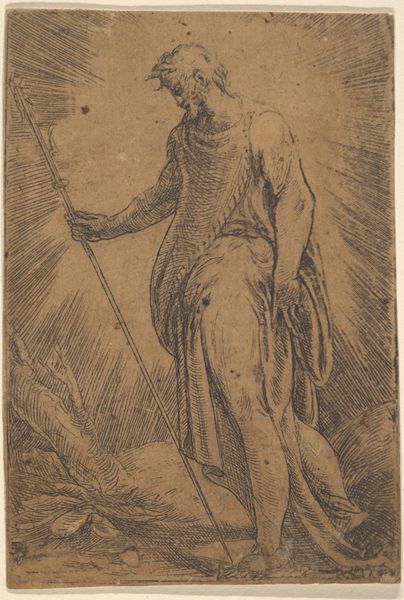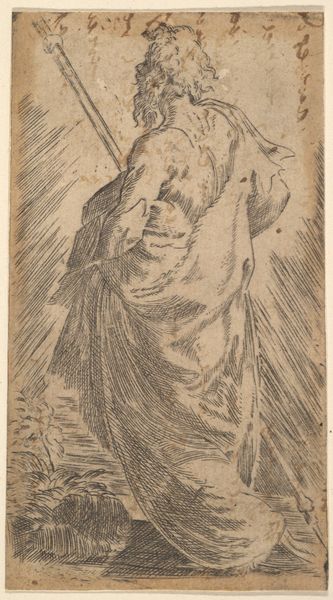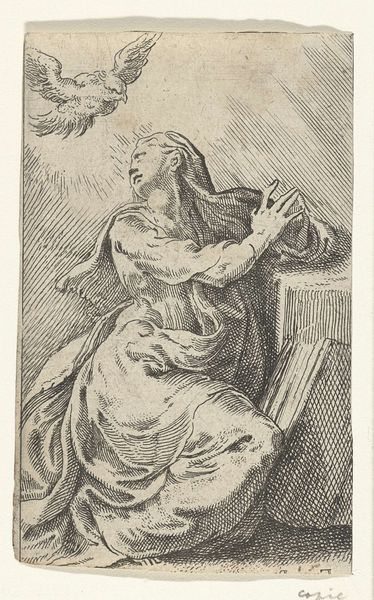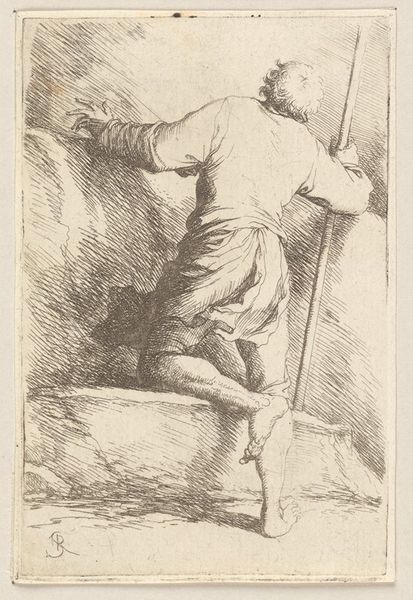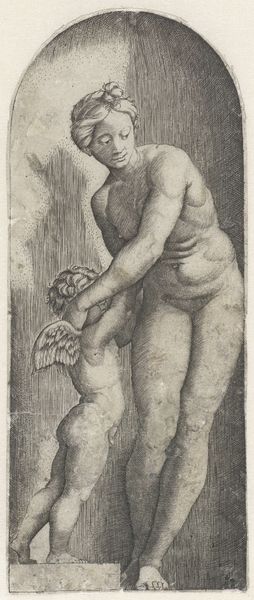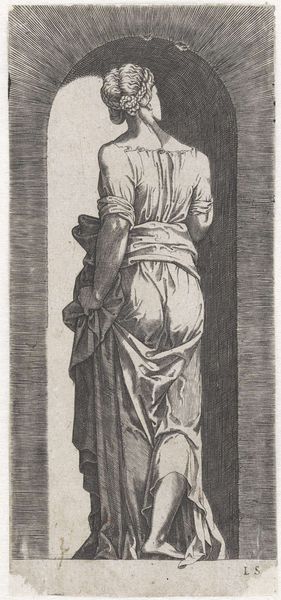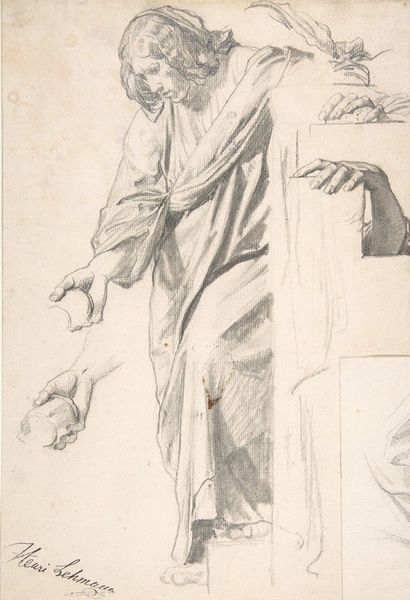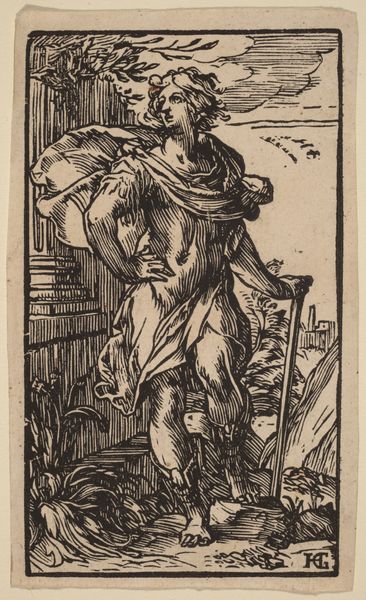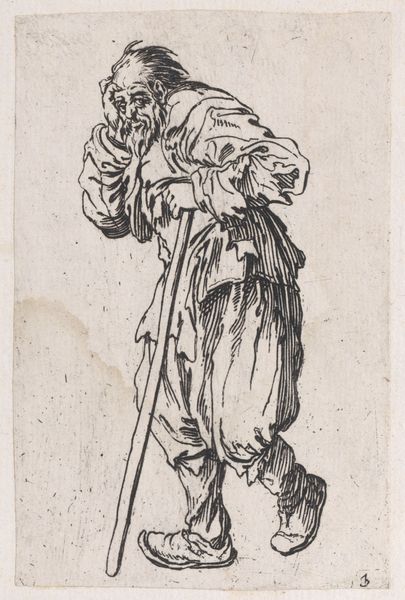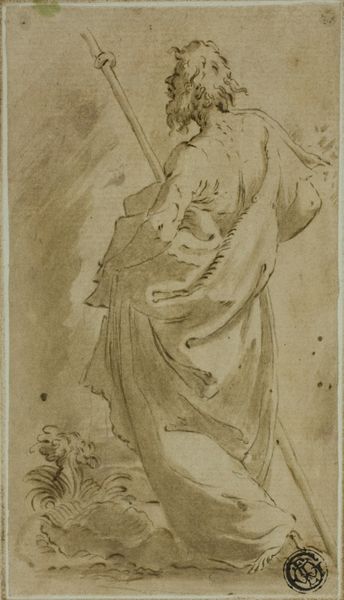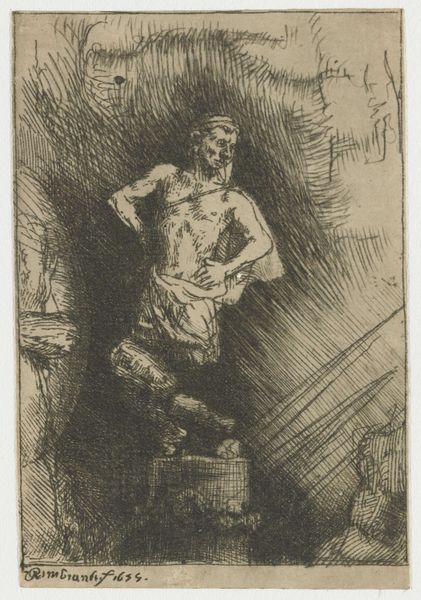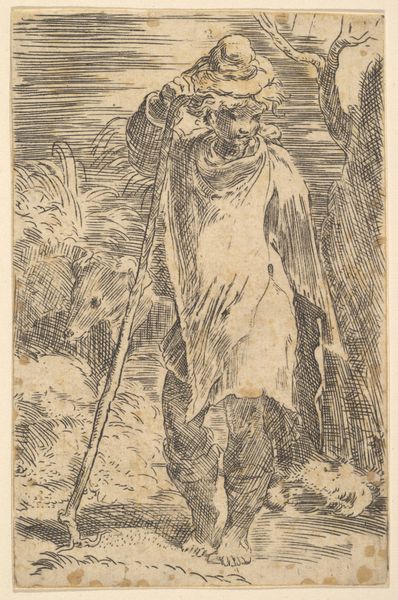
print, engraving
# print
#
mannerism
#
figuration
#
history-painting
#
engraving
Dimensions: height 122 mm, width 69 mm
Copyright: Rijks Museum: Open Domain
Parmigianino made this small print of the Apostle James, likely in Italy sometime in the 1520s or 30s, using etching. Look closely, and you'll notice a wealth of fine lines. These aren't drawn directly onto the metal plate. Rather, they're achieved by coating the plate with wax, then scratching through it with a needle to expose the metal. The whole plate is then submerged in acid, which bites into the exposed lines. The longer the plate is submerged, the deeper the lines, and the more ink they will hold. This is all skilled labor. Consider the implications: an image, capable of being reproduced many times over, not unlike the system of mass production that would emerge centuries later. The beauty of line, the artist's design – these are still present, but they are achieved through a technical process, one that invites the possibility of endless reproduction. Recognizing the interplay between materials, process, and social context allows for a richer understanding of art, blurring the lines between fine art and craft.
Comments
No comments
Be the first to comment and join the conversation on the ultimate creative platform.
